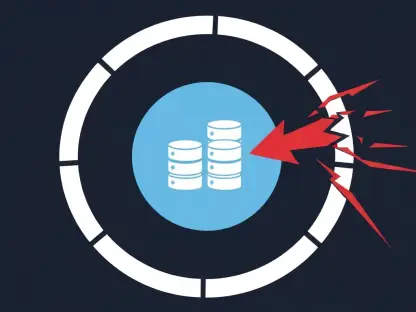In today’s data-centric business realm, companies collect extensive data, aiming to extract pivotal insights for a strategic edge. Data mining emerges as the key, sifting through databases to uncover significant trends and patterns. This process is the lynchpin for converting vast information troves into valuable intelligence.As we delve into data mining, we find a spectrum of methodologies ranging from basic analysis to sophisticated predictive models. These tools enable businesses to anticipate market movements and make informed decisions. Understanding data mining’s influence is crucial as it continually transforms the analytics landscape, signifying the evolving trajectory of data analysis. Through this lens, we’ll appreciate how data mining molds the present and future of business decision-making.
Understanding the Core of Data Mining
The Essence of Data Mining
Data mining offers businesses a lens through which they can interpret their ever-growing data reserves. By drawing otherwise concealed connections, companies can make informed decisions that drive success. Patterns and correlations that would remain buried in an unprocessed dataset come to light through data mining’s capability to parse vast amounts of information—a crucial advantage in an era of digital data abundance. Whether it’s recognizing customer buying patterns or identifying fraud, the ability to sift through data and spot trends has become a linchpin of modern business strategies.Within this treasure trove of raw data, sophisticated algorithms search for hidden strands that bind the data together, creating narratives that lead to insight. These stories, shaped through data, enable companies to anticipate market trends, streamline operations, and personalize customer interactions—components crucial for maintaining competitive strength in a crowded marketplace.
Stages in the Data Mining Process
The journey through the data mining process is one of meticulous strategy and systematic analysis. Initially, there’s the acquisition and aggregation of data from various sources, followed by rigorous cleansing and preparation. This preparation is key to ensuring that subsequent stages are built upon a clean and reliable foundation. Once prepped, the data is stored securely, often in vast databases or data warehouses, ready for the next phase.This leads to the analytical step where the true ‘mining’ occurs—data is explored, examined, and interrogated through a range of complex algorithms designed to detect patterns and anomalies. It’s at this juncture that data mining transforms raw numbers and records into valuable insights, serving as the lighthouse guiding businesses through the fog of data overload.
Data Mining Applications in Different Industries
Retail and Marketing Utilization
The retail sector thrives on understanding and predicting customer behavior, and data mining serves this need precisely. By unraveling the complexities of consumer data, retailers can tailor their offerings, ensuring that products align with customer desires and market demands. This is not just about responding to trends but also about forging new ones, as the insights drawn from data mining can lead to innovation in product development and customer engagement strategies.In the world of marketing, the personalization of ad campaigns has become increasingly pivotal. Social media, a colossal reservoir of user data, provides a rich canvas for marketers to paint their messages upon. Data mining churns through likes, shares, and comments, helping craft campaigns that resonate personally with consumers. It’s these finely tuned messages that are the hallmark of successful modern marketing.
Contributions to Science and Engineering
Beyond the bustling corridors of commerce, data mining’s prowess extends into the realms of science and engineering. In laboratories and research centers, data mining empowers scientists and engineers to transcend traditional boundaries. It aids in hypothesis formation but, more importantly, discerns patterns that spur new lines of inquiry. By uncovering relationships within the data that are not immediately apparent, it fosters scientific advancements and engineering breakthroughs.In these fields’ precise environments, where empiricism reigns supreme, data mining offers a tool of unparalleled precision. It accelerates discovery and facilitates the efficient utilization of research data—ushering in a new era where data-driven science and engineering set the tempo for innovation and progress.
The Human Factor: Careers in Data Mining
Crucial Roles and Their Functions
In the bustling ecosystem of data mining, a triumvirate of roles stands out: data engineers, data scientists, and data analysts. Each plays a vital function in the tapestry of data processing and analysis. Data engineers lay down the infrastructure, ensuring that data pipelines are robust and that information flows seamlessly. They’re the architects of the data world—constructing the platforms upon which massive datasets rest.Data scientists and analysts then take the stage, performing the intricate ballet of analysis. With expertise in statistical methods, machine learning, and a keen understanding of the business context, these professionals interpret patterns and extract the narratives hidden within the numbers. It’s their strategic insights that often catalyze growth and innovation within companies, making their roles both challenging and fulfilling.
Career Pathways and Education
As the clamor for refined data continues to intensify, the demand for skilled data mining professionals follows suit. Career prospects in this field are not only bountiful but are replete with the promise of diversity and rewarding challenges. For those aspiring to enter the data mining arena, the path is marked by a blend of academic rigor and practical learning.Educational institutions and specialized training centers offer courses that range from the foundational aspects of data science to advanced analytics skills. Certain programs, like those provided by curated entities such as DataScientest, even confer certifications like the Level 7 diploma verified by globally recognized universities. Such credentials serve as a testament to one’s proficiency, paving the way for careers in an industry where the data miners are the new-age prospectors of insight and value.
Methodologies and Advancements in Data Mining
Popular Data Mining Techniques
Diverse and powerful, data mining techniques encompass a wide spectrum of methodologies to dissect and understand data. Statistical methods, time-tested for their reliability, remain fundamental in teasing out trends and predictions. Decision trees mimic human decision-making processes, branching out with every choice, representing one of the many machine learning approaches. Clustering techniques, akin to grouping similar items together, shine a spotlight on natural classifications within data that might not be immediately visible.Neural networks, with their architecture inspired by the human brain, are particularly emblematic of the innovative strides in data mining techniques. By mimicking neural connections, they navigate through complex data patterns, learning and adapting as they go. This not only represents the cutting edge of current methodologies but also showcases the forward momentum of the discipline.
Impact on Business and Decision-Making
Data mining has become integral to business strategy, significantly boosting operational efficiency and decision-making. It enables companies to pinpoint inefficiencies, optimize costs, and enhance customer engagement. Crucially, it endows firms with predictive insights, facilitating proactive maneuvers in a volatile market landscape and conferring a competitive edge.As technology rapidly advances, the contribution of data mining to foresight and agility cannot be overstated. It’s a fulcrum of innovation and a linchpin in driving informed decisions that propel businesses forward. Data mining’s role in the corporate realm exemplifies the profound importance of nuanced data analysis in the modern era of information abundance. This tool’s capacity to unlock trends and patterns underscores its vital place in strategizing for industries around the globe.









